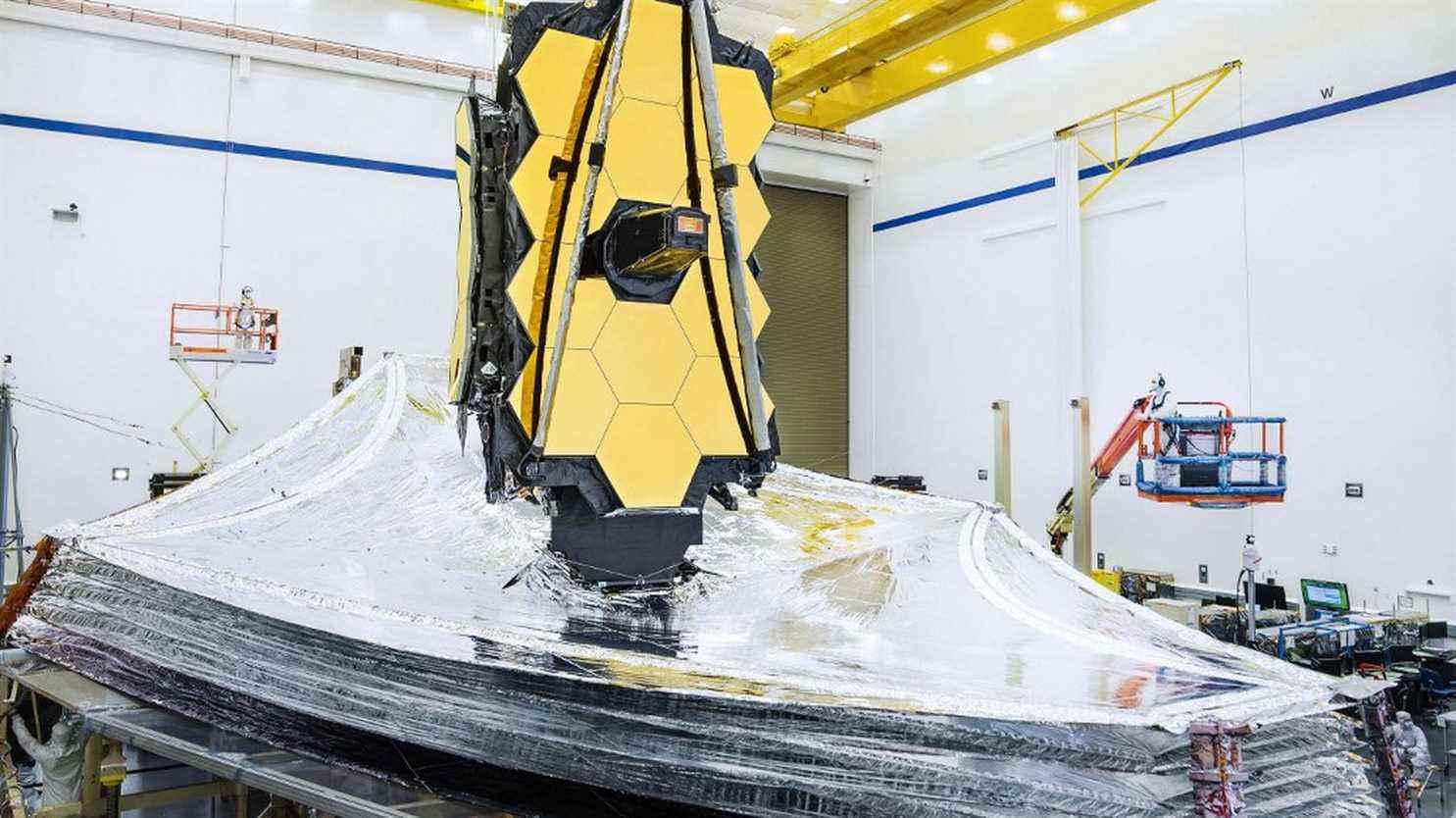It’s done. The James Webb space telescope on Tuesday, January 4, took a major step towards the success of its mission with the full deployment of its heat shield, an essential element for conducting future observations of the cosmos. Even if many operations still need to be successful for the observatory to be fully ready, the deployment of this sunshade was the “more difficult” of the list, recalled in a press release Thomas Zurbuchen, head of scientific missions at NASA, welcoming this success.
The shield is made of five layers each the size of a tennis court, intended to protect scientific instruments from the heat of our star. They have been carefully unfolded and stretched one by one since Monday. Too large to fit into a rocket as it is, the telescope has indeed had to be folded on itself like an origami, and requires to be deployed in space during ultra-perilous procedures, which NASA normally avoids. . “It’s a very special day”, tweeted astronomer Klaus Pontoppidan, chief scientist for James Webb. “I believe it is time to realize that we may soon have a fully operational giant space telescope.”
James Webb is awaited by astronomers around the world and must make it possible to observe in particular the first galaxies, formed just a few hundred million years after the Big Bang. The most powerful space observatory ever designed, took off a little over a week ago from French Guiana and is currently more than 900,000 kilometers from Earth. It’s still on its way to reach its final orbit, 1.5 million kilometers from us – four times the Earth-Moon distance.
In this place, in the event of a problem, no repair mission can be envisaged. Its deployment, piloted from Baltimore, on the American east coast, must therefore be carried out without any missteps. More than a hundred engineers are currently working there 24 hours a day to ensure that everything is going as planned.
The shield measures approximately 20 by 14 meters and is designed in the shape of a diamond. Its layers, as thin as a hair, were previously folded like an accordion, and are now spaced a few tens of centimeters from each other. They are made of kapton, a material chosen for its resistance to extreme temperatures: the face closest to the Sun can reach 125 ° C, and the furthest away -235 ° C. Their deployment involved hundreds of pulleys and meters of cables to guide them, as well as motors to stretch each sail, from every corner of the diamond.
Once in its final configuration, James Webb will arrive at its destination, known as the Lagrange 2 point. The instruments will still need to cool and be calibrated, and the 18 hexagonal mirrors forming the main mirror will be very precisely adjusted. Six months after takeoff, the telescope will then finally be ready to go back to the origins of the Universe, but also to search for habitable environments, outside our solar system.
